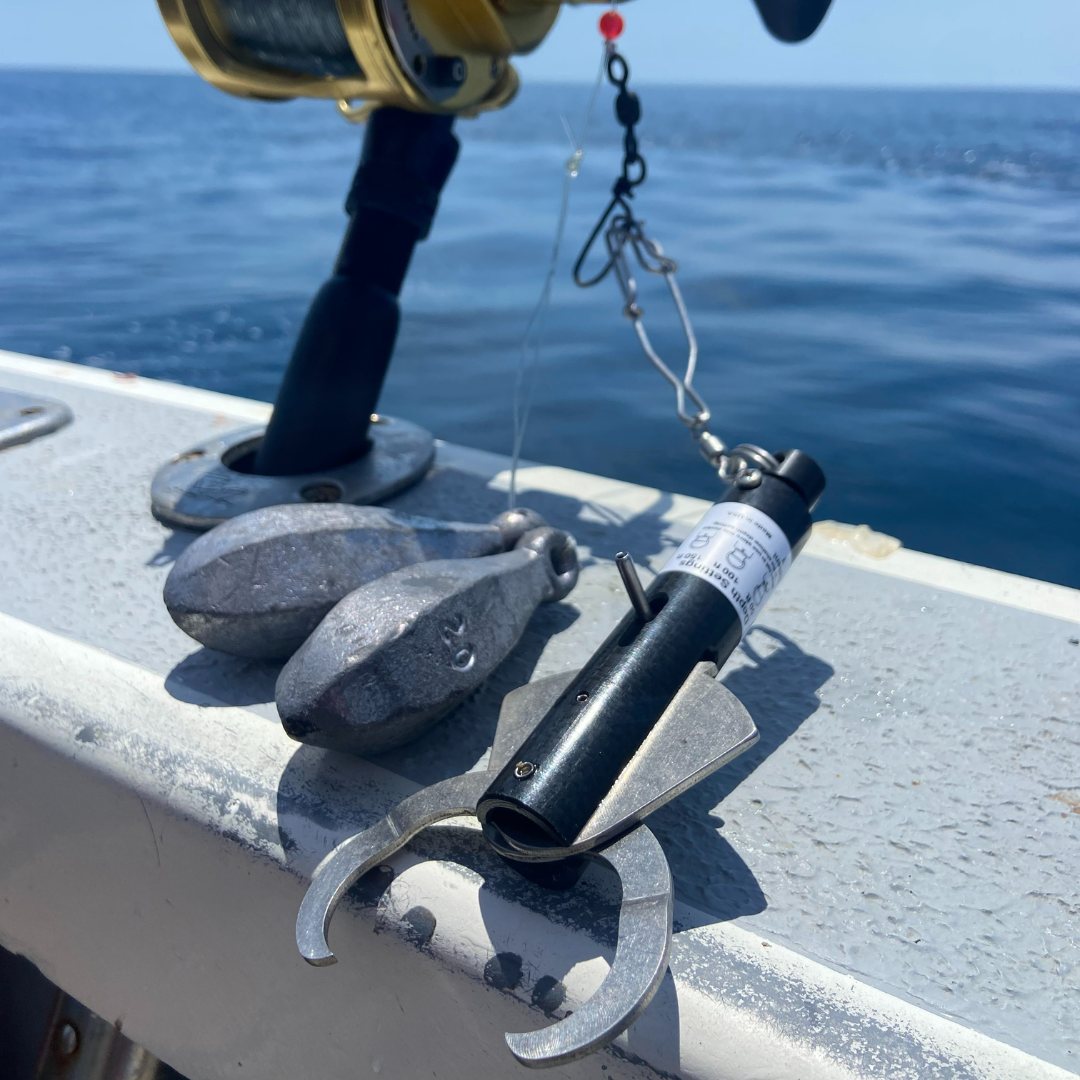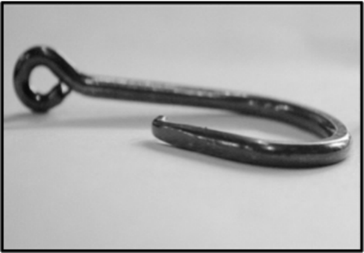Best Fishing Practices
Since we are all invested in the future of fisheries in the South Atlantic, we each share a responsibility to use best fishing practices when catching and releasing fish.
Whether you are releasing a fish because it’s too small, out of season, or you have reached your retention limit, follow these helpful tips below to improve that fish’s chance of survival. Make sure you know your requirements when fishing for snapper-grouper species in South Atlantic federal waters.
Find information for:
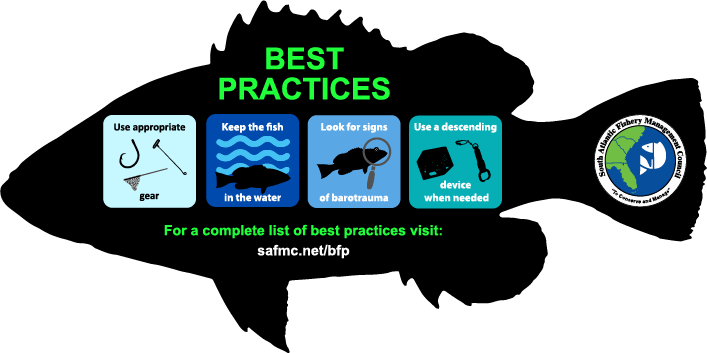
Requirements
Make sure to have the following required gear when fishing for or possessing snapper grouper species in South Atlantic federal waters:
Download the FishRules app to have current and location-based regulations such as season, bag limit, and size limits on your phone.
Best Fishing Practices
Recognizing Barotrauma
Fish caught in deeper waters may suffer from barotrauma, the expansion of gases after being rapidly reeled up from depth. This condition makes it difficult for a fish to swim back down on its own. Generally, fish caught deeper than 30 feet will suffer some effects of barotrauma.
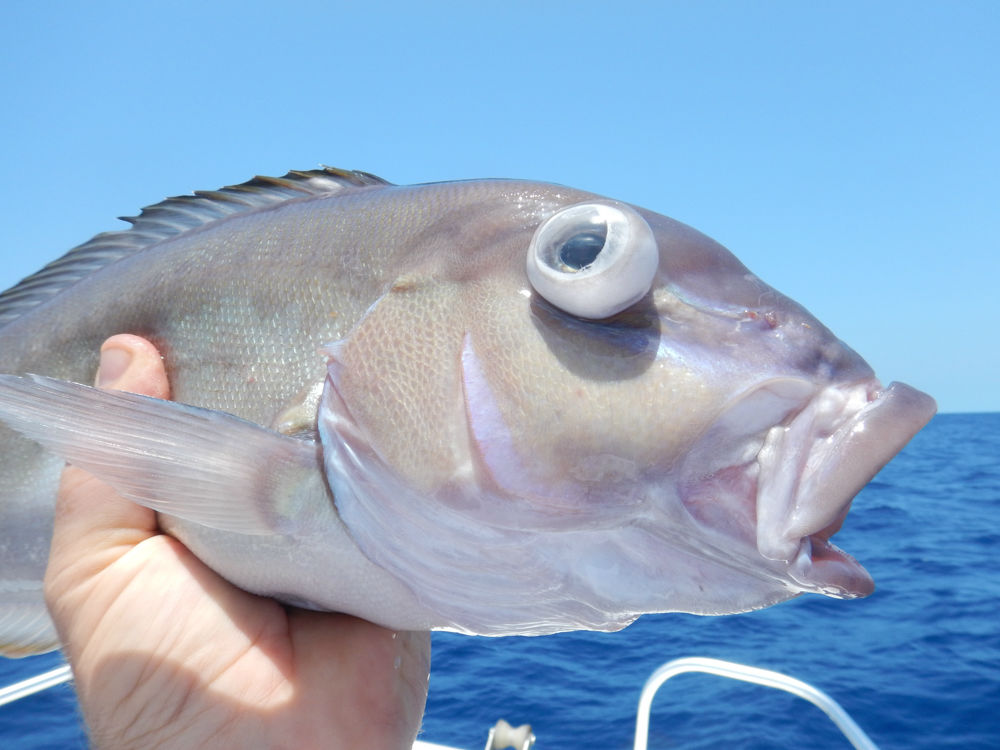

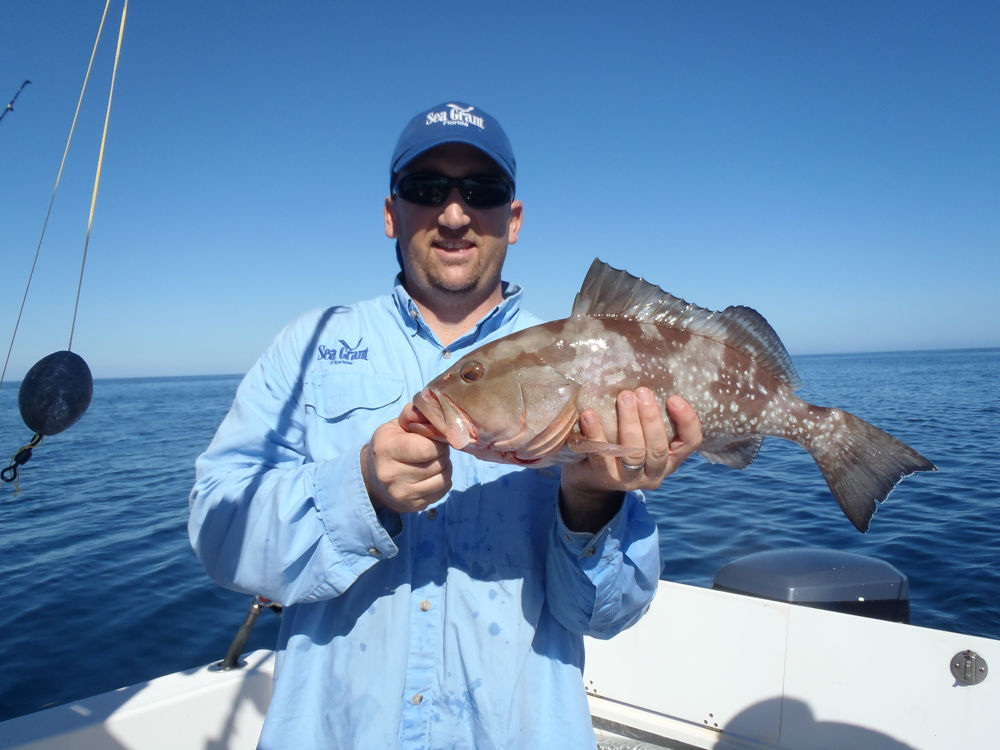
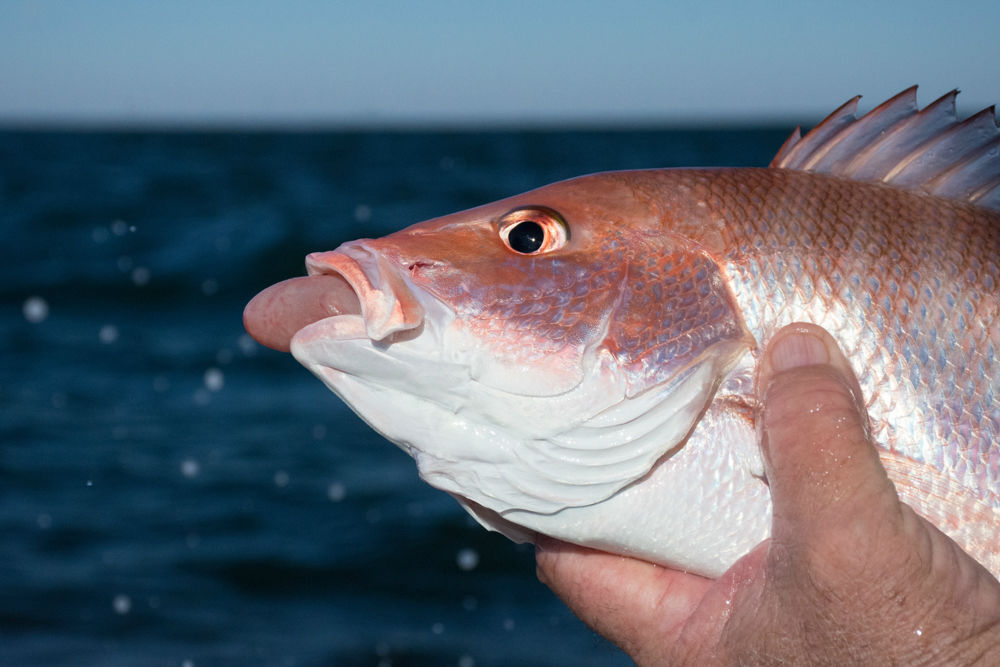
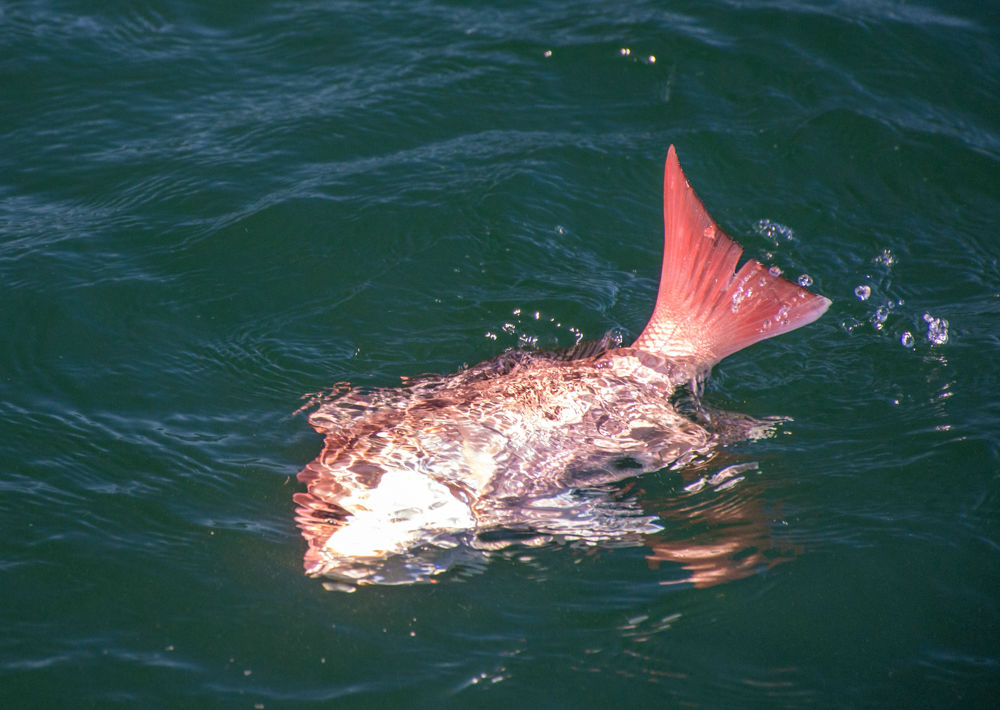
How to Treat Barotrauma
1. Use a Descending Device (recommended approach of the SAFMC)
- Descending Devices DO Work!
- These weighted devices help fish return to depth unharmed. See the regulations section and additional resources to learn exactly what you need to be in compliance with South Atlantic regulations.
- While you must have a minimum of 16 oz of weight attached to a descending device, it is recommended to use 1 pound of lead weight per 5 pounds of fish to ensure the fish reaches the bottom.
- Depending on the type of device you use, it is possible to attach multiple descending devices to your line so that you can release more than one fish at a time.
2. Venting
Venting can be effective when used carefully. However, descending devices are a safer method for most anglers to reduce barotrauma because they do not puncture the fish’s abdomen and are therefore the preferred treatment of barotrauma by the SAFMC.
- If correctly trained, insert a sharp and hollow stainless-steel tool (such as a 16-gauge needle fixed to a handle) in the swim bladder to release gas.
- Note: the fish’s stomach may protrude from its mouth. Do NOT puncture the stomach.
- Reminder: If you choose to vent fish suffering from barotrauma, you are still required to have a descending device readily available!
3. Return to Depth
- Return fish to the depth of capture. If catching fish at very deep depths, return them as deep as possible to improve survival.
Additional Best Practices
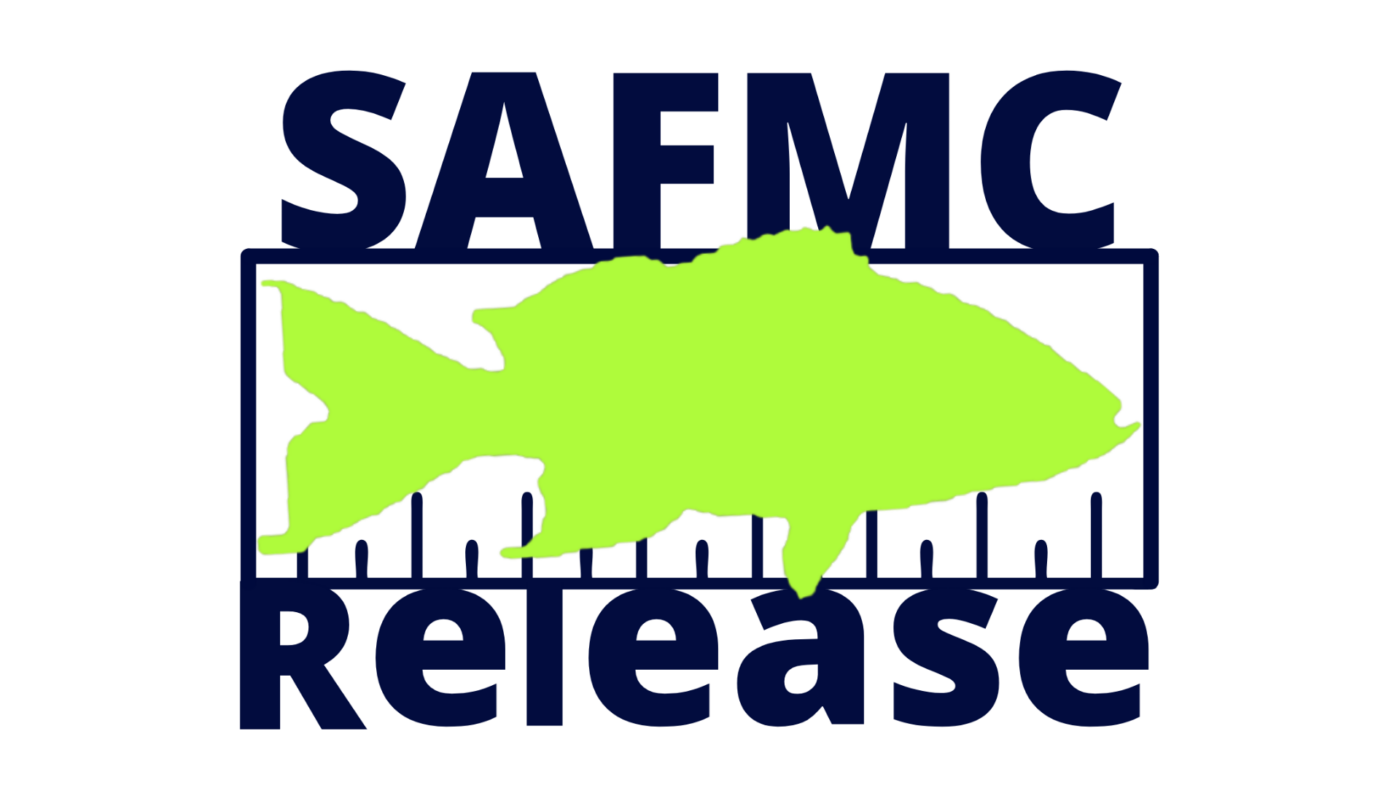
Use SAFMC Release:
It is difficult to sample fish being released on the water, but the easy-to-use mobile app, SciFish, allows recreational, for-hire, and commercial fishermen to log crucial information on their released shallow-water grouper and Red Snapper. Learn more about SAFMC Release!

Plan Ahead:
Always expect to release a fish on any trip and make sure to have the proper equipment such as a knotless and rubberized landing net, a descending device, a dehooking tool, and circle hooks.

Avoid non-target species:
Develop the skills to target the size and species you desire and limit interactions with non-target species.
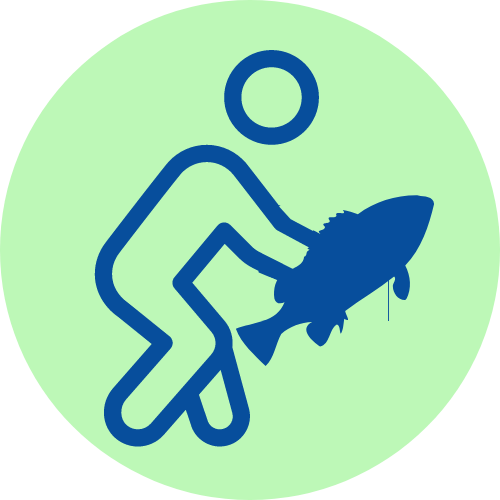
Handling Fish:
Hold fish with wet hands or rubberized gloves and make sure to support the body by holding it horizontally. Take any pictures quickly and get the fish back in the water ASAP. Limiting air exposure increases the chance of survival.

Landing Fish:
Don’t play fish to exhaustion in case the fish will need to be released.
